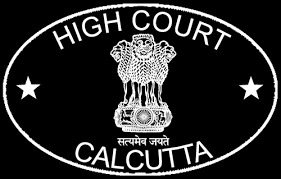This appeal is preferred against the order dated 25.10.2018 passed in I.T.A. No.52/Pat/018 (for A.Y. 2012-13) by the Income Tax Appellate Tribunal,
Patna Bench, Patna.
The assessing officer vide order dated 30.01.2015., while disallowing the expense towards amortization, disallowed an income of Rs.8,41,31,263 in
relation to transactions entered into by the assessee towards the Government securities. Said deduction was claimed on the basis of the instruction 17
of 2008 dated 26.11.2008 issued by the Reserve Bank of India. The assessing officer rejected the claim in terms of the following observations:
“Para-3. From the perusal of the profit and loss account for the year under consideration it is observed that the assessee bank has
claimed operating expenses to the tune of Rs.292,41,39,798/- under the code no. 20080 which, inter alia, includes Rs. 8,41,31,263/-
towards amortization (code 21880). The assessee was asked to justify its claim and explain why not the same may be disallowed as it is not a
allowable expenditure. In reply it was submitted that premium on Govt. Securities is adjusted so that its book value is reduced to its face
value at the time of its maturity. Even if the explanation is accepted, the possible capital gains is not related to current assessment year and
such provisions are not admissible in the case of the assessee as per I.T. Act, 1961. Accordingly the sum of Rs. 8,41,31,263/- is disallowed
and added to the total income of the assessee.â€
In an appeal preferred by the assessee, the said order stands affirmed vide order dated 03.01.2018 and the operative portion of the order passed by
the Appellate Authority reads as under:
“Para-3.1. It is seen that the Board’s Instruction No. 17 of 2008 dated 26.11.2008 refers to RBI guidelines dated 16th October,
2000. The so called RBI guidelines were issued vide letter DBOD. No.BP.BC.32/21.04.048/2000-2001 under the heading “Guidelines for
Classification and Valuation of Investment by banksâ€. The forwarding letter is addressed to “All Commercial Banks (excluding RRBs
and LABs)â€. Therefore, it is amply clear that the so called quidelines did not apply to RRBs. Therefore, without going into the technicality
that the guidelines only mandated classification of certain assets in the books/records of a class of banks for control, disclosure,
presentation etc. the simple conclusion that can be drawn is that the appellant’s reliance on the said Instruction of the Board is wholly
misplaced. The disallowance is, therefore, upheld and accordingly the addition of Rs. 8,41,31,263/- is confirmed.â€
Noticeably, the Appellate Authority does record the factum of the issuance of the instructions, but however, rejected the appeal holding that the R.B.I.
Guidelines are applicable qua all commercial banks (excluding RRBs and LABs).
Petitioner pursued the matter before the Tribunal and vide order dated 25.10.2018, the appeal stands allowed holding the petitioner entitled for the
deduction of the expense claimed for. The operative portion of the order reads as under:
Para-7. After hearing the ld. DR for the Revenue, we note that ld. CIT(A) has confirmed the addition made by the Assessing Officer. We note that
assessee is a Uttar Bihar Gramin Bank and it is maintaining Government Securities as an investment ‘for held to maturity’ As per accounting
rules, the expenditure under the head “amortization of Govt. securities†should be allowed to the assessee as per the prudential norms of the RBI
and the premium amortized has been claimed to be in respect of securities held under the category ‘held to maturity’ and as such the
expenditure is fully allowable. We note that CBDT Instruction No.17 of 2008 dated 26.11.2008, which specifies that the premium paid on Govt.
securities is required to be amortized over the period remaining to maturity. We note that CBDT circulars are binding on the Revenue. This position
was confirmed by the Hon’ble Apex Court in the case of Commissioner of Customs vs. Indian Oil Corporation Ltd, reported in 267 ITR 272,
wherein their Lordships examined the earlier decisions of the Apex Court with regard to binding nature of the Circular and laid down that when a
circular issued by the Board remains in operation then the Revenue is bound by it and cannot be allowed to plead that it is not valid or that it is
contrary to the terms of the statute.
8. Considering the factual position discussed above, the expenses to the tune of Rs.8,41,31,263/- claimed by the assessee under the head
‘Amortization’ is allowed.â€
We notice that the Tribunal, without referring to the communication dated 21st April, 2008 (DBOD. No.BP. BC. 32/21.04.048/2000-2001) and
discussing the applicability of the Circular communicated thereunder, has, by drawing a presumption of the Circular being applicable with the
petitioner, differed with the findings recorded by the authorities below. This approach, in our considered view, is legally unsustainable. The question of
the issuance of the Circular; and its applicability to the petitioner, more so in the light of Section-18 of the Regional Rural Banks Act, 1976 was
necessarily required to be gone into by the Tribunal.
Under these circumstances, we quash and set aside the order dated 25.10.2018 with the direction to the Tribunal to decide the appeal afresh in
accordance with law, expeditiously, preferably within a period of six months.
Since the proceedings pertain to the year 2012-2013, parties are directed to appear before the Tribunal on 15th September, 2022 and parties shall not
take any unnecessary adjournments.
Appeal is disposed of in the aforesaid terms.
Interlocutory Application(s), if any, shall stand disposed of.

